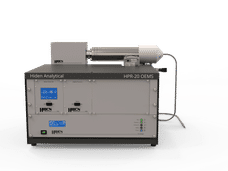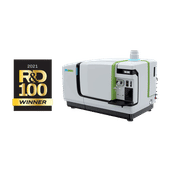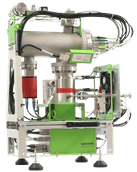Agilent Technologies extends boundaries of environmental metals analysis
Advertisement
Agilent Technologies Inc. announced a system that extends the traditional analytical range for metals in environmental samples in a production laboratory, eliminating the need for other techniques such as Graphite furnace atomic absorption and inductively coupled plasma optical emission spectroscopy (ICP-OES).
The Agilent 7500c inductively coupled plasma mass spectrometer (ICP-MS), with octopole reaction system (ORS) and optional integrated sample introduction system (ISIS), is simpler to operate and faster than traditional systems. It offers simultaneous and highly sensitive quantitation of elements at trace (ppb) or ultratrace (ppt) levels for highly toxic elements, while also accurately measuring common matrix elements, such as calcium or sodium, which are present at much higher concentrations.
The Agilent system can tolerate typical matrix levels previously restricted to ICP-OES. The result is accurate quantitation of mineral elements at 100 or even 1,000 ppm. At the same time, high sensitivity, low background, and the ability to eliminate or reduce spectral interferences allows the simultaneous, ultratrace determination of previously difficult-to-measure elements such as arsenic, selenium and mercury. Under a single set of conditions, the system can extend the practical dynamic range by a factor of 10 or more downward and a factor of 10 upward.
Two features of the Agilent 7500c ICP-MS make these results possible. ISIS uncouples sample uptake and rinse flow from nebulizer flow, allowing rapid sample uptake and rinseout without overloading the sample introduction system. As a result, total matrix loading is significantly reduced while uptake speeds and rinseout are improved. Moreover, the introduction system can autodilute very high concentration samples to further extend dynamic range.
The ORS is a highly efficient yet easy-to-use reaction cell that can operate in both collision and reaction modes. The ORS can significantly reduce or remove the problematic spectroscopic interferences found in complex sample matrices, making it ideally suited for the analysis of sample types found in the environmental, foods, clinical and geological industries. The key advantage of the ORS is that it uses only simple reaction gases -- He and H2 -- which minimize the formation of new interferences within the cell.
For further information, request application note "Extending the Dynamic Range of Environmental ICP- MS Using the Integrated Sample Introduction System and Octopole Reaction System," Agilent publication number 5988-6628EN. This note is available without charge from any Agilent sales office or Agilent's Web site at www.agilent.com/chem.
Other news from the department research and development
These products might interest you
Most read news
More news from our other portals
See the theme worlds for related content
Topic World Mass Spectrometry
Mass spectrometry enables us to detect and identify molecules and reveal their structure. Whether in chemistry, biochemistry or forensics - mass spectrometry opens up unexpected insights into the composition of our world. Immerse yourself in the fascinating world of mass spectrometry!

Topic World Mass Spectrometry
Mass spectrometry enables us to detect and identify molecules and reveal their structure. Whether in chemistry, biochemistry or forensics - mass spectrometry opens up unexpected insights into the composition of our world. Immerse yourself in the fascinating world of mass spectrometry!






























































